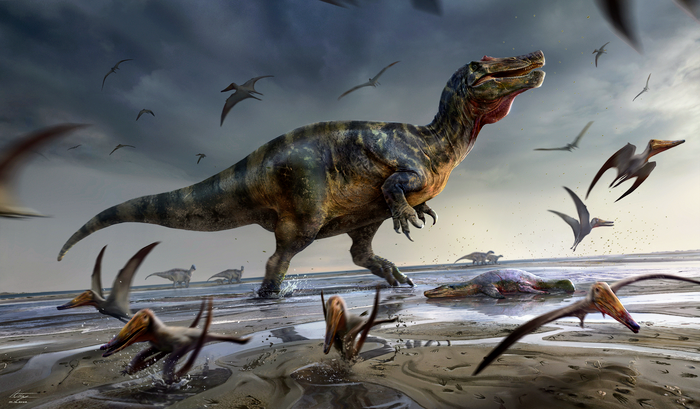
Study reveals Europe’s largest predatory dinosaur
Paleontologists from the University of Southampton have discovered what seems to be the largest predatory dinosaur to ever walk Europe. The dinosaur probably measured over 10 meters in length and lived approximately 125 million years ago.
“This was a huge animal, exceeding 10 m in length and probably several tonnes in weight. Judging from some of the dimensions, it appears to represent one of the largest predatory dinosaur [sic] ever found in Europe – maybe even the biggest yet known,” said PhD student Chris Barker, who led the study. “It’s a shame it’s only known from a small amount of material, but these are enough to show it was an immense creature.”
The dinosaur was excavated on the Isle of Wight. The animal was a “two-legged” theropod with a face resembling a crocodile. The remains are now housed at Dinosaur Isle Museum in Sandown. The creature has been named the “White Rock spinosaurid” after the white rock layer where it was discovered.
“Unusually, this specimen eroded out of the Vectis Formation, which is notoriously poor in dinosaur fossils,” said corresponding author Dr. Neil Gostling, who teaches Evolution and Palaeobiology at the University of Southampton. “It’s likely to be the youngest spinosaur material yet known from the UK.”
Only scattered remains of the dinosaur who once roamed the lagoon nearby are left to tell the story, including two enormous vertebrae from the pelvis and tail.
“Most of these amazing fossils were found by Nick Chase, one of Britain’s most skilled dinosaur hunters, who sadly died just before the Covid epidemic,” said co-author Jeremy Lockwood, a PhD student at the University of Portsmouth and Natural History Museum. “I was searching for remains of this dinosaur with Nick and found a lump of pelvis with tunnels bored into it, each about the size of my index finger. We think they were caused by bone eating larvae of a type of scavenging beetle. It’s an interesting thought that this giant killer wound up becoming a meal for a host of insects.”
The scientists hope that further searching or erosion will reveal more remains of the White Rock spinosaurid to tell more of its story to the world.
The research is published in the journal PeerJ.
Image Credit: UoS/A Hutchings
—
By Zach Fitzner, Earth.com Staff Writer













